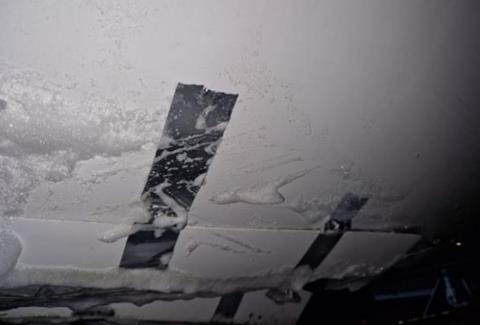French investigators have found that a Cessna 525A Citation departed Paris Le Bourget after personnel failed to realise nose-gear maintenance was incomplete, forcing the jet to return for a gear-up landing.
The Valljet aircraft’s nose-gear doors had not been reconnected to their operating rods after inspection, says French investigation authority BEA in its probe into last year’s 28 October event.
In order to move the jet to a parking position, the doors were closed and held shut with adhesive aluminium tape, and a red marker placed to inform that the check was incomplete.
But when the aircraft was parked, a technician – who had assumed the role of team leader in the absence of the designated staff member – removed the red marker without seeing the aluminium tape.
Maintenance work cards did not show that the gear-door rods were unattached. The adhesive tape was missed by the towing agents, who transferred the aircraft to the operator’s apron, and the pilots during their night-time walk-round.

BEA believes that, after the jet took off for Farnborough, the crew commanded landing-gear retraction, the right-hand nose-gear door was probably forced open by the actuating rod contacting the aft hinge.
This tore the tape which had been holding the doors closed, allowing the left door partially to open. The disconnected rods were unable to close the doors, leaving them both suspended by aerodynamic forces – but sufficiently open to jam the retracting nose-wheel and prevent its extension.
BEA says the aircraft spent considerable time holding to burn fuel after the crew realised it had an undercarriage problem. It carried out a low pass to confirm the nose-gear was not deployed, and the crew subsequently declined offers of further visual inspection by a Dassault Rafale fighter aircraft or a helicopter.
After nearly 3h airborne the Citation (F-HMSG) eventually landed with its nose-gear retracted on Le Bourget’s runway 25, suffering slight damage, although neither pilot nor the sole passenger was injured.
BEA states that technicians handling the aircraft prior to the occurrence had all reported “significant fatigue” at the end of their working week, heightened by task reorganisation and the need to carry out “numerous” movements of aircraft in the hangar and parking bays.
Shortcomings in the technical operation have since been addressed by corrective measures approved by maintenance oversight authority OSAC.


























